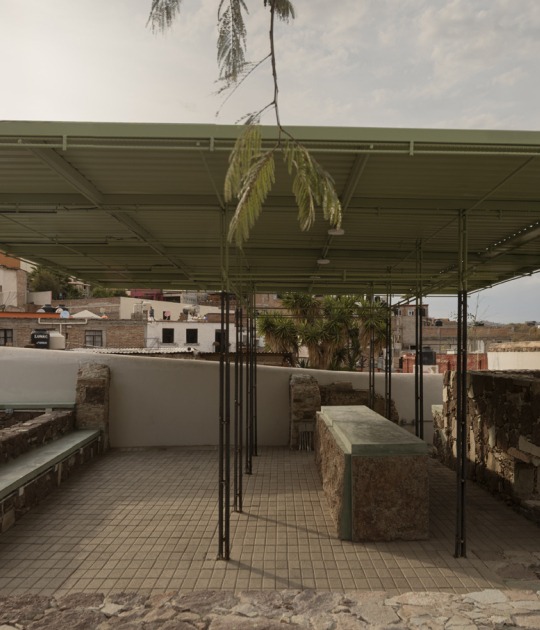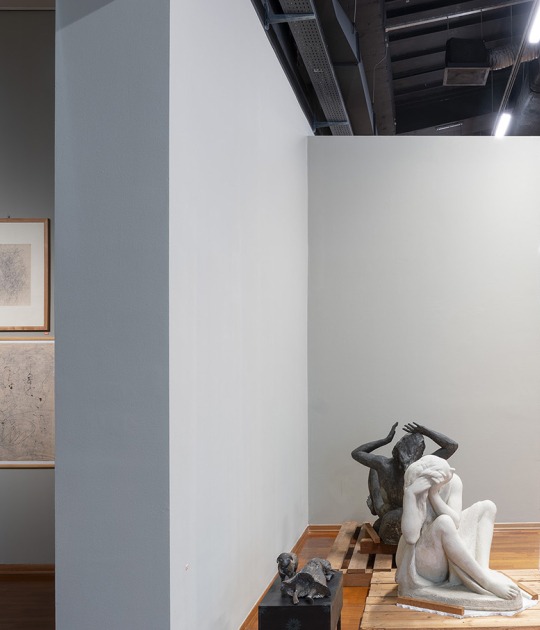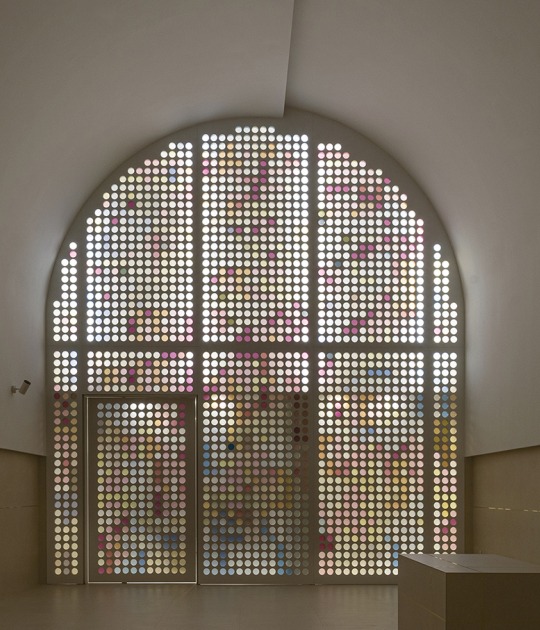The stepped terraces grow slowly cutting into the building's floor plates as they ascend, reducing the overall volume of the tower towards its top.
The outdoor spaces created by the terraces total 1,207 square meters and are populated with a mixture of drought and wind-resistant plant species native to the American prairie, shrubbery, and trees that will bloom in the wintertime, and trellises adorned with English and Boston Ivy.
The plant arrangement differs depending on orientation to the sun and high-velocity winds. A water management system will catch rainwater for redistribution through the vegetation.
The Spiral was developed by Tishman Speyer and built by Turner. BIG collaborated with Adamson Associates and structural engineer WSP Cantor Seinuk on its design.
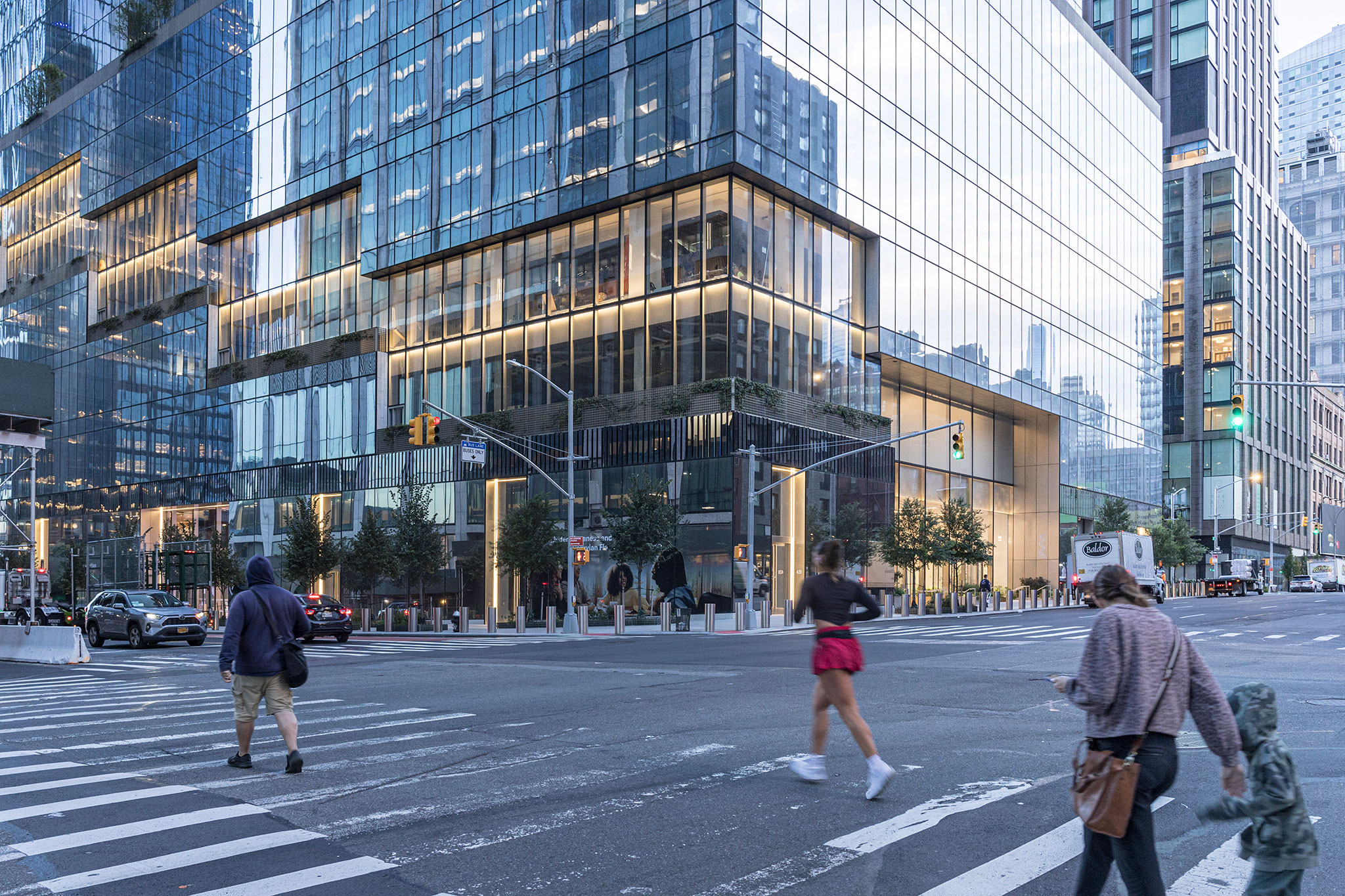
The Spiral by BIG. Photograph by Laurian Ghinițoiu.
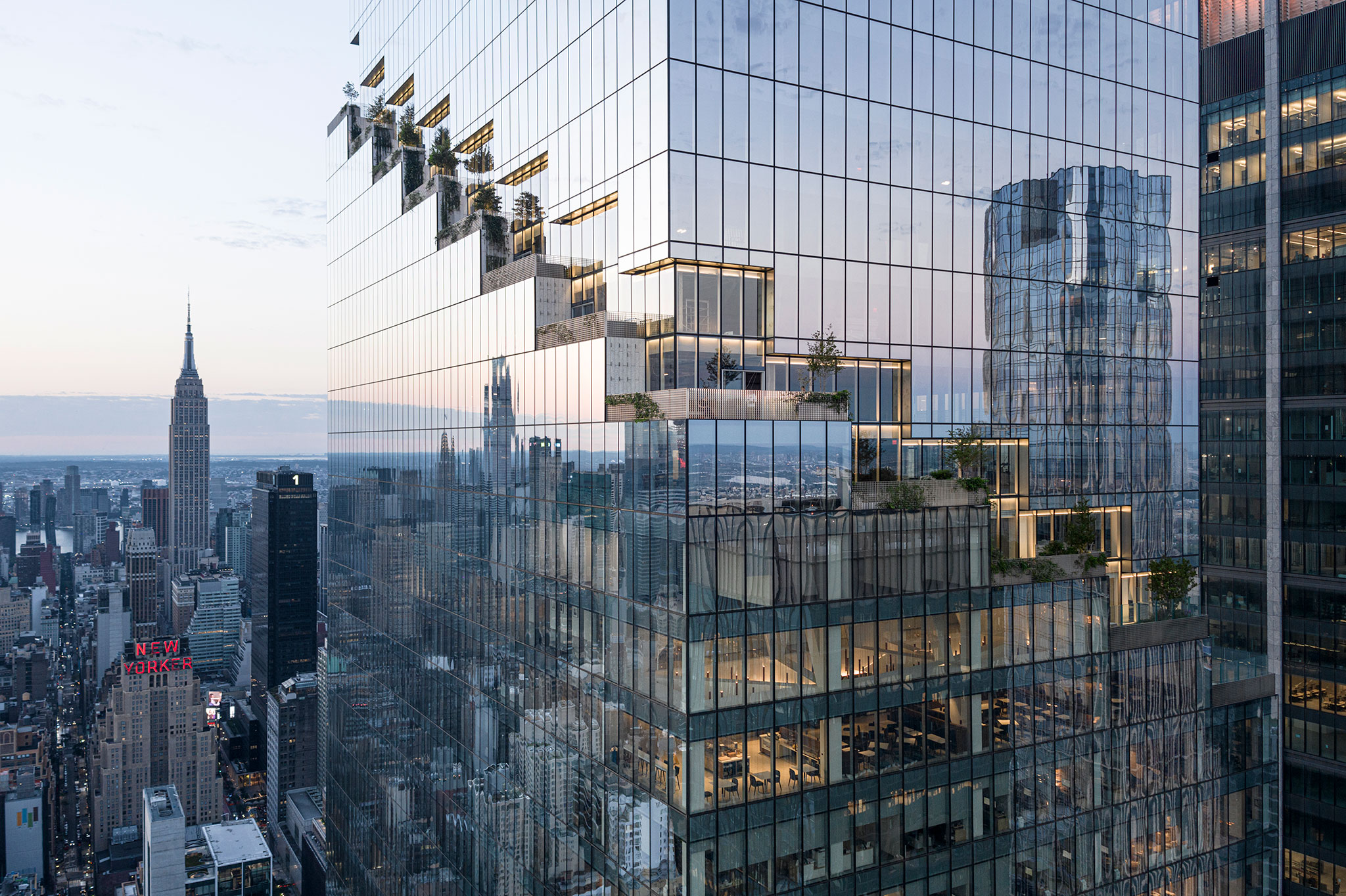
The Spiral by BIG. Photograph by Laurian Ghinițoiu.
Project description by BIG
Named the world’s Best Tall Building in its category by The Council on Tall Buildings and Urban Habitat at the organization’s annual conference last week, The Spiral visually extends the landscape of the nearby High Line Park up and around The Spiral’s exterior, allowing access to green outdoor terraces from each of the building’s 66 stories.
Developed by Tishman Speyer and built by Turner, The Spiral has officially opened its doors to major companies including Pfizer, Debevoise & Plimpton, Turner Construction and HSBC, among others. Located on West 34th Street between Hudson Boulevard and 10th Avenue, The Spiral neighbors the elevated High Line and Bella Abzug Park on Manhattan’s west side. The commercial high-rise, designed by BIG in collaboration with Adamson Associates and structural engineer WSP Cantor Seinuk, measures 66 stories and 2.8 million square feet, reaching a height of 1,031.5 feet. The Spiral is pursuing LEED Silver certification. The tower is BIG’s first completed supertall, and first completed commercial high-rise in New York.
From street level, the tower draws the eye upwards to the ribbon of greenery that extends the High Line beyond West 34th Street and into the Manhattan skyline. Reminiscent of a conservatory, the tower’s glass panel façade offers passersby a look into the building’s bright and spacious lobby, adorned with artwork by Dutch studio DRIFT and lush foliage, which can be accessed via entrances on both Hudson Boulevard and 10th Avenue.
As a gesture to the building’s surroundings, The Spiral’s lobby incorporates seven different metals to honor the area’s industrial history, with floor panels measured to the exact dimensions of the precast concrete planks spanning the High Line.
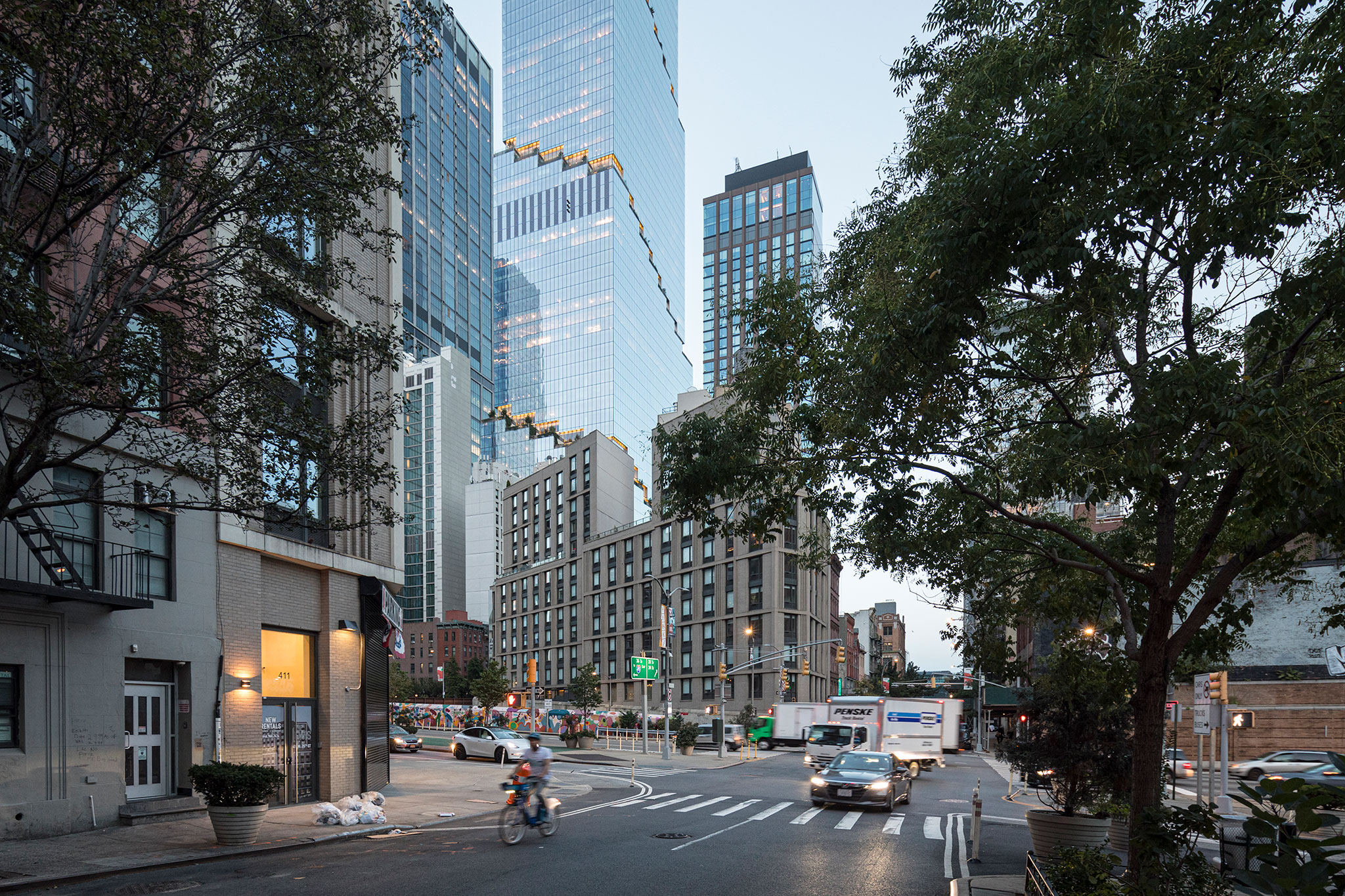
The Spiral by BIG. Photograph by Laurian Ghinițoiu.
The Spiral slowly reduces in volume as it rises, following the zoning envelope of the site. Its stepping language resonates with the design aesthetics of classic Manhattan skyscrapers such as the Empire State Building and Rockefeller Center, while its slender proportions and use of modern materials and detailing speak to the design features of contemporary high-rise architecture.
The Spiral slowly reduces in volume as it rises, following the zoning envelope of the site. Its stepping language resonates with the design aesthetics of classic Manhattan skyscrapers such as the Empire State Building and Rockefeller Center, while its slender proportions and use of modern materials and detailing speak to the design features of contemporary high-rise architecture.
Cascading landscaped terraces and hanging gardens climb the tower in a spiraling motion to create a unique, continuous green ribbon that wraps around the façade of the building and supplies each office floor with readily accessible terrace space.
With approximately 13,000 square feet of outdoor space, a landscape of The Spiral’s size has never been installed at or above 300 feet elevation in New York City. Most of the plant species on the ground cover are native to the American prairie, making them resistant to high winds and droughts.
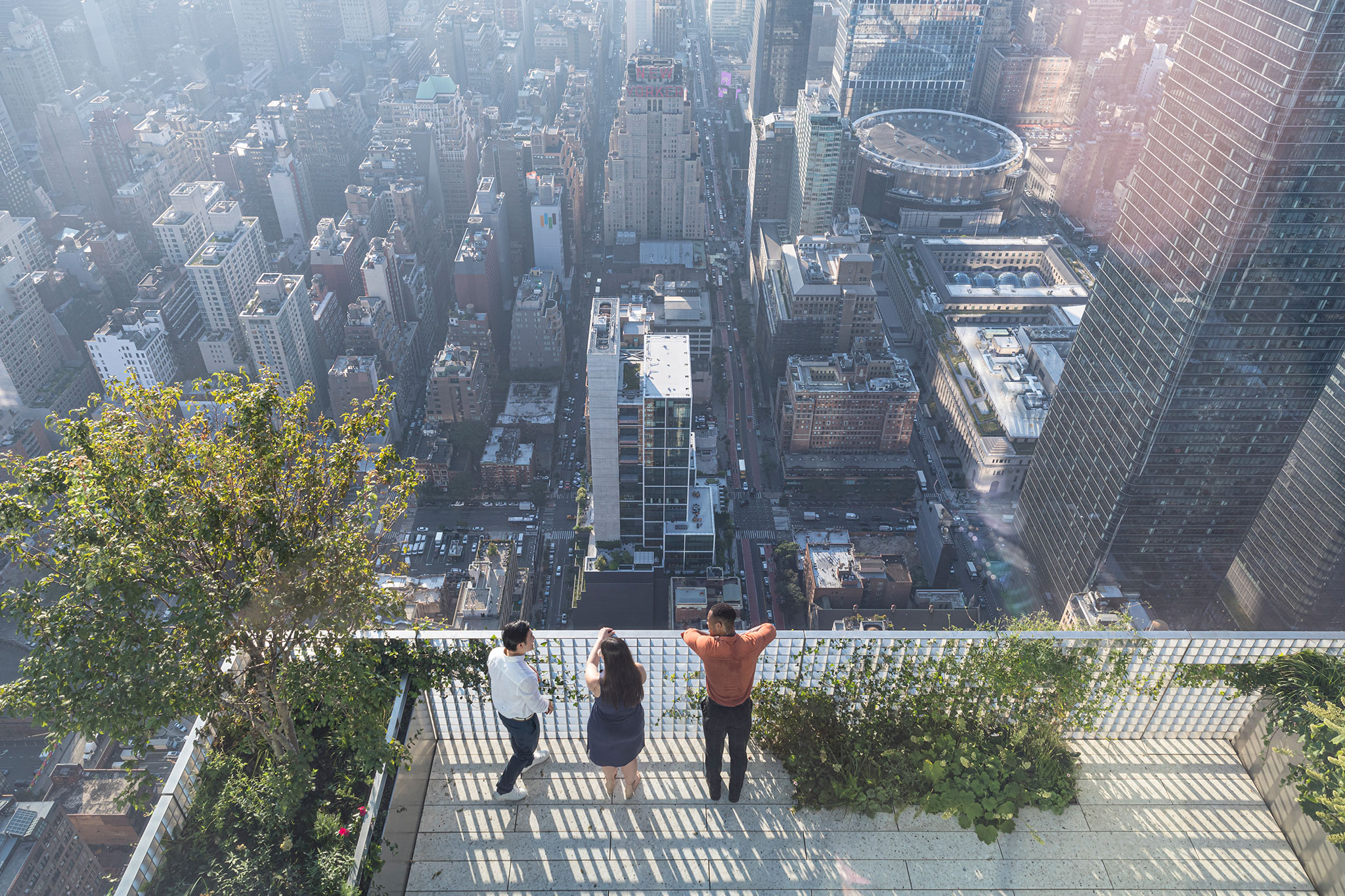
The Spiral by BIG. Photograph by Laurian Ghinițoiu.
As the building rises, a second layer of shrubs and taller bushes that blossom in winter are introduced, and finally, the landscape is crowned with single- and multi-stem trees that flower as early as February, along with vertical trellises with English and Boston ivy that keep their leaves through the winter. The plant palette differs on each side of the building depending on sun orientation and endurance against high-velocity winds.
“The Spiral pioneers a new landscape typology by bringing gardens to a high rise. Its continuous cascade of greenery from one level to another provides office spaces with a new vertical dimension of social and biophilic connectivity. Designed to strengthen collaboration and well-being, each terrace hosts plantings specific to the varying daylight, winds, and temperatures on every floor of the tower. These gardens will welcome neighboring birds, bees, and butterflies to expand New York's biodiversity to the city skyline.”
Giulia Frittoli, Partner, BIG.
As The Spiral ascends, each floor’s accessible terrace offers impressive views over Manhattan, the Hudson River, and New Jersey. Select floors offer a double-height amenity space and the option to connect adjacent floors via a grand staircase, suggesting an alternative to elevators and encouraging interaction among colleagues.
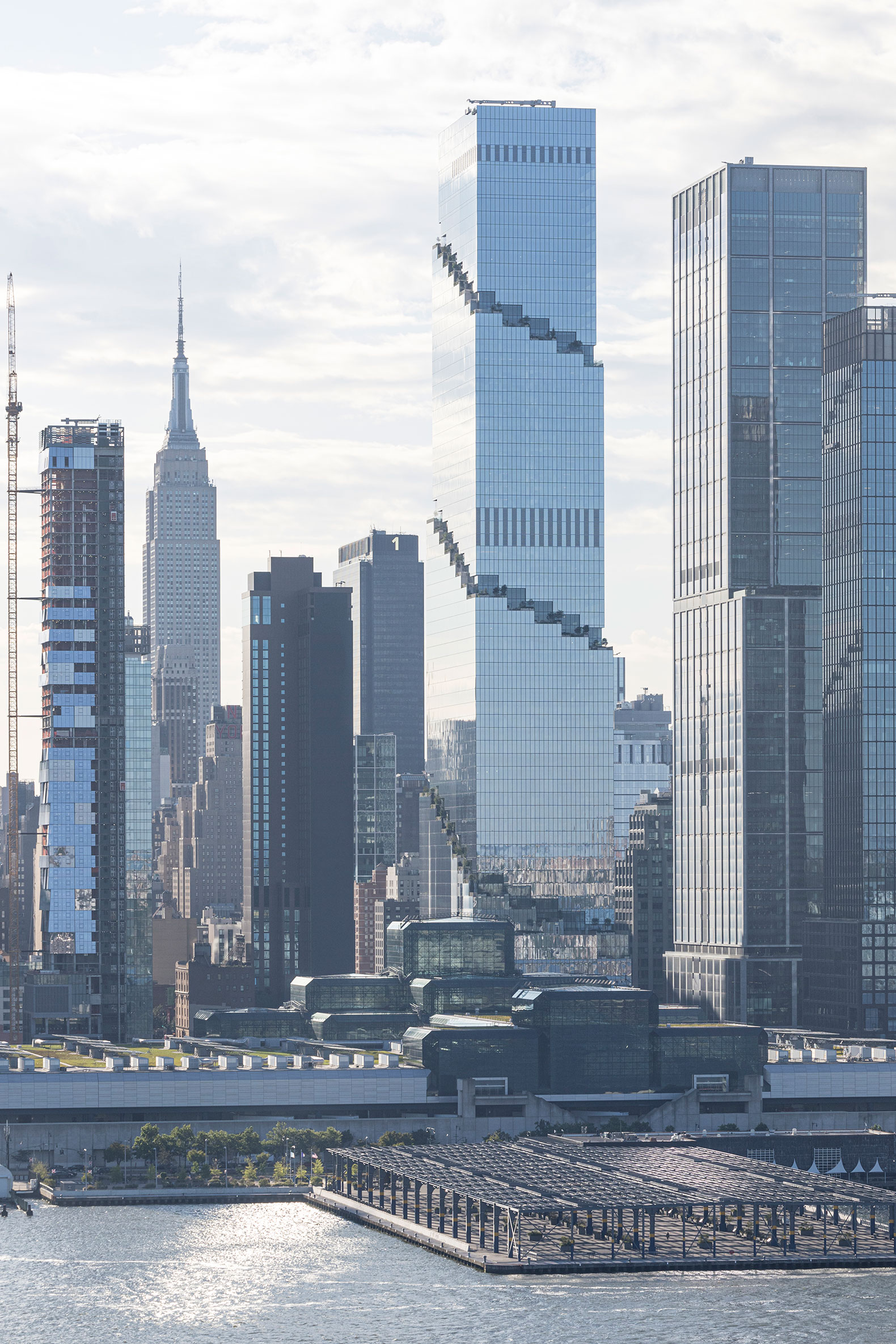
The Spiral by BIG. Photograph by Laurian Ghinițoiu.
As The Spiral ascends, each floor’s accessible terrace offers impressive views over Manhattan, the Hudson River, and New Jersey. Select floors offer a double-height amenity space and the option to connect adjacent floors via a grand staircase, suggesting an alternative to elevators and encouraging interaction among colleagues.
The Spiral promotes a contemporary workplace where nature becomes an integrated part of the office environment and spatial features are continuously adaptable to the changing needs of its occupants. To foster a connection to the outdoors and support The Spiral’s interior foliage, a generous ceiling height, and specially selected exterior glass coating enables a deeper incursion of natural light. The building’s water management system collects overflow rainwater to treat and redistribute throughout the tiered landscaping, allowing it to save millions of gallons of water annually. This not only promotes sustainable irrigation - it also further cements The Spiral as a green addition to the Manhattan skyline.



























